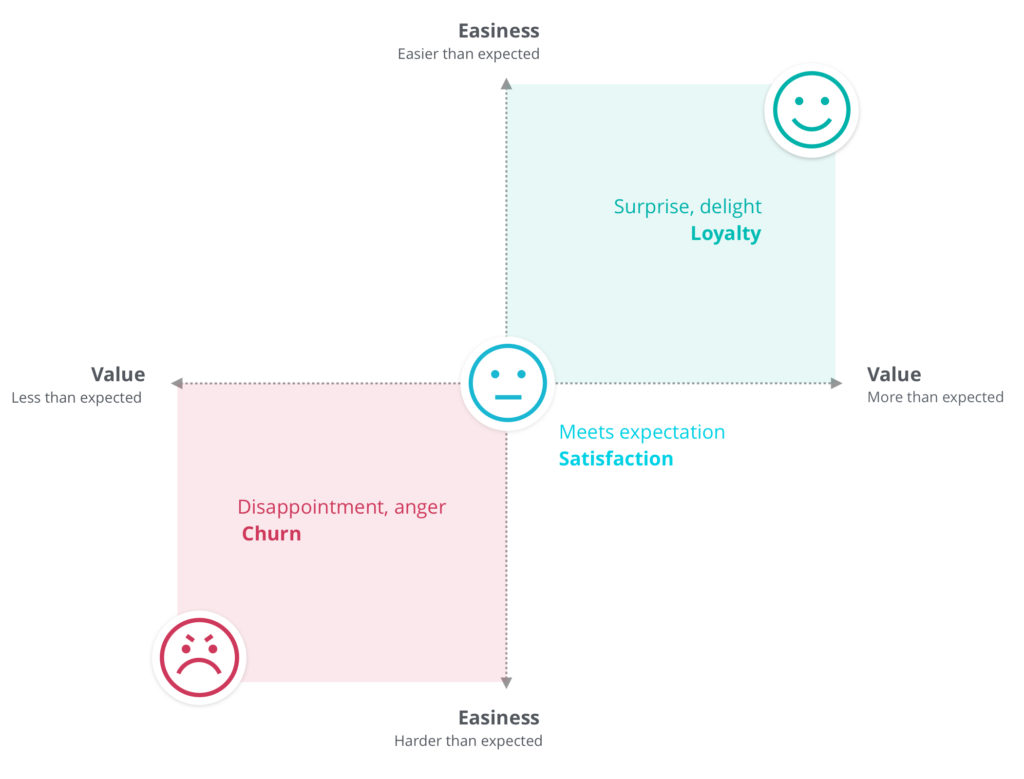You may notice that we say we create delightful experiences or we aim to delight customers a lot, but what do we mean by this? It’s more than just an adjective to make the experience seem better than normal. It has meaning. Well, it actually has two meanings and this can sometimes cause confusion.
The first is an emotional delight that comes from good looking visuals or surprising animations. There is no better word for this other than delightful, but so that we don’t confuse it with the second delight, we often call it something like “the fairy-dust” or “the sparkle“. This sparkle doesn’t add to the functionality, or arguably even the usability to the interface, but they do make a world of difference to the experience. Happy people stay longer, concentrate more and remember your brand better.
The other delight is that of BJ Fogg’s diamond of user delight. It’s not just visual or emotional, it’s about one’s expectation being exceeded. This delight is experienced if a task is easier than expected or the outcome (the value) of doing it is more than expected. I have redrawn his diamond of delight into something that I can understand and explain a bit better. What I love about this one is that it shows that if you just meet customer’s exception, their reaction will be natural. It was as difficult as they expected and got what they expected. No real impact was made.

A different configuration of BJ Fogg’s Diamond of user Delight
Both delights have to do with exceptions and surprise, but each is tackled very differently. BJ Fogg’s delight needs to be baked into the functionality of the software. Into its reason for being. We need to truly understand customer’s goals and work out how to exceed them today, and tomorrow. The fairy-dust delight comes a little later, in the visual design of the animations and the UI. As decent UX becomes more common and expected, we see a lot of designers falling back on the fairy-dust delight to be the differentiator. It’s easy, quick to implement, and the customer’s reaction is much faster. It really works to get initial engagement, but the overall experience will still win in getting returning customers. When designing new experiences or iterating on existing ones, we need to ensure that we take into account both delights ensure we are taking advantage of both.